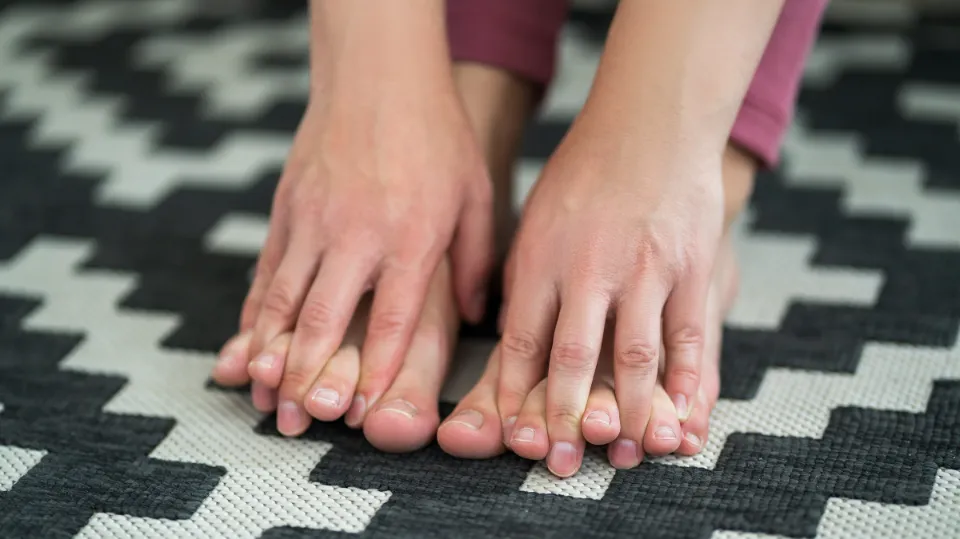You could be qualified for disability benefits if your psoriatic arthritis symptoms interfere with your ability to perform your job duties.
Psoriatic arthritis (PsA) is a long-lasting inflammatory condition that can make joints swell, hurt, and stiffen. Symptoms vary from person to person and depend on the severity of the disease. If PsA interferes with your ability to perform your job, it may be recognized as a disability by the law. It might be based on how bad the illness is.
We’ll look at the prerequisites and go over the application process for psoriatic arthritis disability benefits below.
Is Psoriatic Arthritis a Disability?
If PsA interferes with your ability to perform your job, it may be regarded as a disability under the law. It might be based on how bad the illness is.
A 2016 study found that around 1 in 3 people diagnosed with PsA missed work in the last year because of their symptoms. Similar numbers of people claimed that their ability to work a full-time job was impacted by their condition.
A 2019 study notes that people with PsA may have physical and psychosocial effects that impact their jobs. High rates of absenteeism and unemployment are the result. It also affects productivity at work.
A rheumatologist can assist in creating a PsA treatment strategy. This treatment plan can also help you make some adjustments in the workplace, such as:

- Using a hands-free phone headset
- Putting arthritis-friendly grips on pens and pencils
- Keeping frequently used items within close reach
- Using an ergonomic setup for your desk and chair
- Taking frequent breaks to move your body
Up to 30 percent of people diagnosed with PsA claim that the illness has affected their capacity to find and keep a job. You might be eligible for some disability benefits programs if your condition prevents you from working.
Causes That Lead to Disability
A person may be eligible for benefits if inflammatory arthritis — such as PsA — leads to the following:
- Ongoing inflammation or deformity in one or more major joints in a leg, foot, hand, or arm
- Difficulty performing large and small movements — for example, walking, carrying out personal hygiene tasks, and shopping
- The involvement of two or more organ systems
- Two or more systemic symptoms, such as weight loss or fatigue
- Inflammation and fusing of part of the spine
However, social security and other bodies assess a range of factors when deciding if someone is eligible for financial support. A person does not automatically qualify for disability benefits even if a doctor certifies their disability.
The person’s eligibility will depend on the number, severity, and limitations of their symptoms.
What is Psoriatic Arthritis?

Psoriatic arthritis or Skin and joints are impacted by PsA, a chronic autoimmune disease. The joints and the points where tendons and ligaments attach to your bones swell as a result of this painful condition.
About one-third (30%) of people with psoriasis develop psoriatic arthritis, according to the National Psoriasis Foundation (NPF).
Is Psoriatic Arthritis a Serious Condition?
True, PsA is a serious illness that has no known treatment. But early detection could lead to better treatment results. You must adhere to a treatment strategy that includes physical and occupational therapy if you want to manage your psoriatic arthritis. You may also be prescribed drugs such as:
- Anti-inflammatory medications like ibuprofen and the steroid prednisone
- Drugs that work on the immune system (methotrexate, Otezla, or Xeljanz)
- Injectable biologics (Enbrel, Humira, Remicade, or Orencia)
Leaving PsA untreated can affect your quality of life. It might be difficult to get a good night’s sleep or engage in your favorite activities due to the pain and swelling. Thankfully, medication helps many PsA sufferers manage pain and inflammation. Physical therapy helps you maintain your range of motion so you can move comfortably.
What Are the Government Disability Programs?
The U.S. federal government runs two programs that provide benefits to people with disabilities:
- Social Security. People with disabilities who have worked long enough and for a long enough period of time can receive benefits through the Social Security disability insurance program. Your age will determine your specific qualifications. Based on your lifetime average earnings, a payout is made to you.
- SSI, or Supplemental Security Income. People with disabilities who are low-income and resource-rich are given cash assistance through this program. A person who is eligible for the program as of 2022 may receive up to $841 monthly from the federal government. Depending on their qualifications, some states may also give additional money to residents.
Qualifying for Disability Benefits

If a person with PsA satisfies the SSA requirements for those with inflammatory arthritis or musculoskeletal disorders, they may be eligible to apply for benefits.
Inflammatory Arthritis
As shown below, the SSA classifies inflammatory arthritis conditions into four groups. Disability benefits may be available to anyone who meets the requirements in any of the categories.
Category A
The criteria for this category include evidence that a person has persistent inflammation or deformity in at least one major joint in a leg or foot.
Additionally, they must possess medical proof that either they require a walker or are incapable of using their arms and hands independently. They also have at least one major joint in each upper extremity affected.
Category B
A person must have swelling and deformity in at least one major joint of an upper or lower extremity in order to qualify under this category. They must also have either involvement of at least two organs or organ systems, or have at least two systemic symptoms, such as tiredness and involuntary weight loss.
Category C
Any individual with spondyloarthritis, an inflammation of the spine, falls under category C. Involvement of at least two organs or organ systems, as well as fixation of a portion of the spine at an angle of 30 to 45 degrees or fusion of a portion of the spine at a minimum of 45 degrees from the upright position, are all symptoms.
Category D
A minimum of two systemic symptoms, such as extreme fatigue and uncontrollable weight loss, are required for someone to fall into this category. In addition, they must have a marked level of any of the following:
- limitations in maintaining social functioning
- limitations in performing activities of daily living, such as dressing and bathing
- limitations in finishing tasks in a timely manner due to problems with concentration, pace, or persistence
Musculoskeletal Disorders
Sometimes a person with PsA can qualify for disability under the criteria for musculoskeletal disorders. The SSA divides up these disorders into categories based on several factors such as:
- involvement of systems beyond joints and bones, including nerve tissue
- surgery on a weight-bearing joint
- abnormality of a major joint in an arm or leg
Conclusion: Psoriatic Arthritis and Disability
If you have psoriatic arthritis, you may qualify for Social Security disability insurance. Your level of benefits depends on your ability to work and how long you’ve been paying into Social Security. Making your case will require a lot of supporting evidence, but the work is worthwhile.
Getting approved for disability benefits can be a confusing, challenging, and time-consuming process. Seek additional guidance from doctors’ offices, social workers, counselors, attorneys, local hospitals, or support groups as you work through it.
FAQs
How Much Disability Do You Get for Psoriatic Arthritis?
What does psoriatic arthritis disability pay? At the beginning of 2019, SSA paid an average monthly disability benefit of about $1,234. The average SSDI benefit is expected to be $1,358 in 2022, according to Social Security.
Can I Claim Benefits If I Have Psoriatic Arthritis?
Can I Claim Benefits If I Have Psoriatic Arthritis?
You can check out more information we have on arthritis:
- The Risk of Developing Arthritis Be Reduced

- When Elderly Parent Can’t Walk: Things May Do a Favor

- How to Stop Fluid Leaking from Legs: Causes&Treatments&Reminders

- Get Arthritis from Cracking Your Knuckles: Is It True?

- Can Being Vegan Help Arthritis: a Helpful Guidance

- Why Do Broken Hips Kill Elderly: 3 Newest Explanations in 2023




